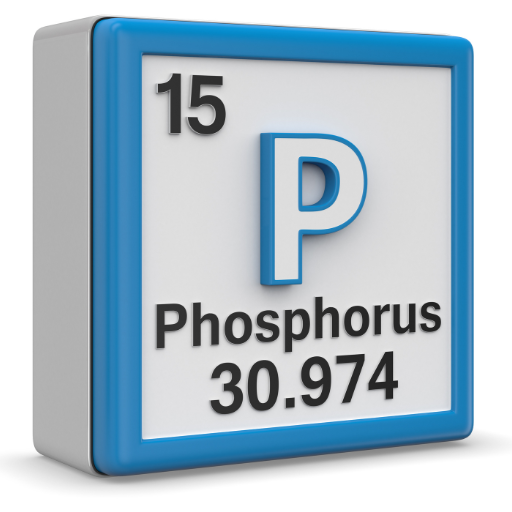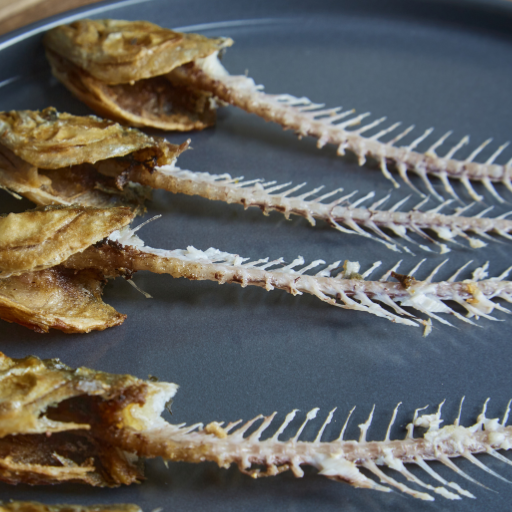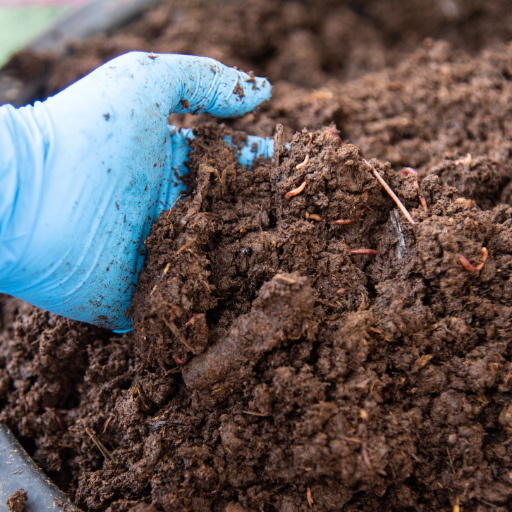Plants cannot grow without phosphorus, an important nutrient which is involved in photosynthesis and energy transfer and moving nutrients around the plant. If you know how to incorporate natural phosphorus fertilizers into your gardening regimen properly, you can greatly improve the health and productivity of your plants. It highlights different types of natural sources of phosphorus fertilizers that exist, explains what advantages they have over other plants, provides step-by-step instructions on using them efficiently in your garden. Thus, by unlocking the power of natural phosphorus, one can create a thriving sustainable garden environment that fosters strong plant growth and high harvests.
What is Natural Phosphorus Fertilizer?
Natural phosphorus fertilizer is sourced from organic ones as well as mineral deposits that can provide plants with available forms of phosphorus. Some common examples are bone meal, rock phosphate, and composted manure. Bone meal is a direct product from the meat industry, rich in phosphorous and calcium, making it an excellent option for hardening root cells or for developing flowers. Similarly, rock phosphate derived from clay deposits serves as a slow-release source of phosphorous hence enhancing soil fertility over time. Another example is composted manure, which contains essential phosphorus and other vital nutrients obtained through the decomposition of animal waste. Use of these natural sources ensures sustainability in increasing soil P levels thus promoting healthy plant growth and development.
Understanding Phosphorus and Its Role in Plant Growth
Phosphorus is one among several essential macronutrients that plants require to grow properly. In plants, it is involved in many physiological and biochemical processes such as energy transfer, photosynthesis, nutrient transport, signal transduction etc. It plays a critical role in adenosine triphosphate (ATP), facilitating plant energy transfer. Moreover, it also makes up a major constituent of nucleic acid materials which form part of the genetic architecture for plants.
The critical technical parameters controlling the use of phosphorus in plants are:
- Plant-available phosphorus (P-availability): This represents the ability of soil’s P to be absorbed by plants; optimum P availability occurs within pH levels between 6.0-7.5.
- Phosphorus mobility: In most soils, nitrogen and phosphorous have low enough mobility; therefore, it must be close to the root zone location where there can be effective uptake.
- Phosphorus concentration in tissue: For dry weight basis leaf tissues, optimal levels usually range between 0%2 to 0%5%.
It is important to manage phosphorous effectively so as to enhance root development, resulting in improved plant vigor and resistance to stresses. The soil should have such natural phosphorous fertilizers (bone meal, rock phosphate, and composted manure) for the sustainability of this nutrient availability throughout its lifetime and thus promoting plant healthiness as well as longevity.
Types of Natural Phosphorus Sources: Bone Meal, Rock Phosphate, and More
Bone Meal: It is the finest powder made from ground animal bones mostly of cattle. It provides an excellent source of phosphorus normally containing about 15% to 25% weight by weight of phosphorus. Organic farmers often prefer bone meal because it comes from natural sources and releases slowly, thereby being ideal for maintaining sustainable soil phosphorous levels. The recommended application rate is typically about 10 lbs. per 100 square feet on average.
Rock Phosphate: Rock phosphate is a natural mineral with high amounts of phosphorus also known as phosphorite. Typically, it contains some 20 – 30% pentoxide (P2O5) which is equivalent to approximately five times as much P (O for every two molecules). Unlike bone meal, rock phosphate has low solubility (non-soluble), rendering it suitable for acidic soils where nutrient release can be facilitated with time. The typical application rate for rock phosphate is between two to five tons per acre.
Composted Manure: Animal waste, when properly composted, becomes an important source for supplying P in a system. On average, the percentage content ranges from its diet and species, but in general terms, this includes around 0.5-1.5 %. With decomposition improving soil structure while gradually releasing nutrients thereby achieving a balanced soil nutrient profile, applying composts at rates ranging from1-3 ton/acre based on nutrient status makes sense.
Fish Bone Meal: Fish bone meal derived from processed fish remains boasts a P content ranging between four and six percent (%). Being rich in organic matter, it greatly enhances microbial activity within soils. Moreover, fish bone meal is commonly used concurrently with other organic amendments to ensure total supplies of plant nutrients are met adequately. Dosages vary widely but generally range from about five (5) to ten (10) lbs./100 sq ft.
Bat Guano: Another great organic source of Phosphorus is bat guano which is accumulated excrement from bats containing a range of ten percent (10%) phosphorus. Bat guano consists of high nutrient content and rich microbial populations, making it one of the best soil amendments for enhancing plant growth as well as fertility. Therefore, to avoid disrupting soil nutrient balance that results from excess application, recommended rates should be about 1-2 lbs./100 sq ft.
Each one of these natural phosphorus sources has its own benefits and characteristics which make it suitable for different types of soils or farming practices. By selecting properly and applying them correctly, greater health in crops can be achieved while sustaining agricultural productivity.
Comparing Phosphorus Fertilizer to Other Organic Options
Long-term soil health and sustainability are distinct benefits offered by phosphorus fertilizers, which consist mainly of bone meal, rock phosphate, and compost. Bone meal is preferred for initial planting stages as it immediately provides a boost of phosphorus. It contains 10-15% calcium that is highly instrumental in the development of strong roots. Conversely, rock phosphate is more effective for continuous soil enrichment due to its gradual release through microbial action and soil pH. This wider availability (25-30% P-content) results in sustained plant growth especially in perennial gardens.
Conversely, chemical phosphorous fertilizers usually do not have additional minerals despite having higher percentage of immediate-available phosphorous which contributes to soil degradation over time. More so, they are capable of running off hence leading to environmental issues like pollution caused by phosphATES Organic compost is low in concentration regarding phophours but gradually releases nutrient within the ecosystem thus forming balanced as well as resilient soils habitat.The idea behind this process lies in blending together organic sources of phosphorous with routine soil testing so that nutritious plus environmentally friendly plant cultivation can be achieved holistically.
Why Should You Use High Phosphorus Fertilizer?

High phosphorus fertilizers are very important for a few critical aspects of plant health and growth. Firstly, phosphorus is an essential nutrient that significantly contributes to photosynthesis, energy transfer, and nutrient translocation within the plant system. It promotes root development which in turn leads to stronger and more expansive root systems that are better equipped to take up water and nutrients. All these efforts are especially significant when plants put forth their first leaves. Also, Phosphorus boosts flowering, fruiting as well as seed formation in ornamentals and crops respectively.
Plants without enough phosphorous may show stunted growth, late maturity and low yields. Therefore, it is crucial to use high-phosphorous fertilisers in order to have the best possible plant growth and maximize agricultural yields.
Advantages of Phosphorus on Healthy Fruit and Flowering
Phosphorus plays a pivotal role towards healthy fruiting or flowering because it has profound effects on several physiological as well as biochemical processes occurring within a plant. One of them is ATP (Adenosine Triphosphate) formation by means of which this microelement takes part in metabolic processes necessary for growth. Besides this fact, nucleic acids synthesis requires its presence along with phospholipids whose composition includes these substances responsible for the structure of cells.
Data from reputable sources reveal key technical parameters concerning phosphorus:
- Optimal Concentration Levels: According to Cornell University, soil phosphorus levels should ideally range between 30-50 ppm (parts per million) to promote vigorous flowering and fruiting.
- Absorption Rates: Research indicates that plants absorb phosphorus predominantly in forms such as H₂PO₄⁻ and HPO₄²⁻, with absorption rates being optimal at soil pH levels between 6.0 and 7.5.
- Phosphorus Mobility: Unlike nitrogen and potassium, phosphorus is relatively immobile within the soil, necessitating its presence in a bioavailable form near the root zone for effective utilization. This immobility underscores the importance of proper soil placement and management practices to prevent deficiencies.
In summary, phosphorus is indispensable for maximizing fruit and flower production through its essential role in energy transfer, structural integrity, and optimum nutrient uptake.
How High Phosphorus Levels Support Bloom and Nutrient Uptake
High levels of phosphorus influence bloom and nutrient uptake directly, according to several mechanisms supported consistently by leading research in this field.
Firstly, ATP is a significant element of phosphorus’ and it drives many plant metabolic activities which are important for plant growth as well as development. Sufficient amounts of phosphorus ensure that there is enough energy available for the synthesis of essential biomolecules such as nucleic acids. This is confirmed by University of Minnesota data that indicate the role of phosphorous in DNA and RNA synthesis important to cell division and growth.
Secondly, root establishment and functioning depends on the presence of adequate phosphorus in the soils. An expanded root system leads to an increase in surface area among roots thus improving water absorption capabilities as well as nutrient intake from soil. The Colorado State University indicates that availability of phosphorus within the root zone influences formation of root hairs and lateral roots which greatly help in nutrient uptake.
- Optimal Soil pH: Phosphorus availability peaks at soil pH levels between 6.0 and 7.5. This range ensures that phosphorus exists predominantly in forms like H₂PO₄⁻ and HPO₄²⁻, which plants can readily absorb (University of Minnesota).
- Concentration Levels: Ideal phosphorus levels in the soil range from 30-50 ppm to promote healthy flowering and fruiting (Cornell University).
- Application and Mobility: Given phosphorus’s limited mobility in soil, its application should focus on ensuring bioavailable forms are present in the root zone, as highlighted by Colorado State University.
In summary, maintaining high phosphorus levels within optimal parameters enhances bloom and nutrient uptake by ensuring energy availability, promoting robust root systems, and supporting key biochemical processes integral to plant growth.
How to Make Homemade Phosphorus Fertilizer?

Cost effective and environmentally friendly, homemade phosphorus fertilizers can be made. Bone meal is a common method, which is full of phosphorus. You should take bones from your kitchen to make bone meal, clean them thoroughly and bake them at very high temperatures so as to become fragile. After they have cooled, grind them into a fine powder and add it to the soil. Also you may prepare banana peel fertilizer because bananas have many natural occurring elements that include potassium and phosphorus. Collect some banana peels during their ripening process until they are completely dry then ground into powdered form. This powder could be scattered on the ground around your plants or mixed with the soil. Another way of producing it involves using fish bones; just like bone meal, fish bones can be gathered up, cleaned up as well as dried after which they are crushed into a fine powder thus producing a phosphorous rich manure type.These methods offer steady supply of phosphorus in its natural form for healthy root and flower formation in plants.
Simple Homemade Fertilizer Recipes High in Phosphorus
Another simple method is to use bone meal, which is made by baking animal bones at temperatures above 400°F until they become brittle and then grinding into a fine powder. Bone meal typically contains phosphorus ranging from 15-27% depending on the source and processing methods used. Another way to get an effective high-phosphorus organic fertilizer is by drying banana peels and grinding them into a fine powder. Approximately 3.5% of a banana peel’s weight consists of phosphates. The bones of fish, when cleaned, dried, and ground in the same manner as bone meal are also used to make fishbone manure that has anywhere between 10-12% phosphate content. These systems allow for not only recycling of organic waste but also ensure that there is consistent release of bioavailable phosphates in the soil which are crucial for plant metabolism & growth.
Using Home Items to Create Natural Phosphate Fertilizers
Household item’s usage for making natural phosphate fertilizers is one type of sustainable gardening that latches on day-to-day trash disposal approach. One good source are eggshells because they have about 0.1 % phosphate contents in them .Therefore; rinse your egg shells well, dry them up well and crush them into fine dust before adding it to the soil. Still maintaining household items that contain high levels of phosphorous you can think about coffee grounds which have approximately 0.3% phosphorous content in them.Don’t mix it or compost directly but wood ash from untreated wood contains about (1-2%)one point zero percent up to two percent(2)phosphates.People add a little bit unto their garden soils using wood ash.The following methods will help you use an eco-friendly way enriching your soil with necessary nutrients for healthy plant growth passing through every stage of development possible
Steps to Convert Bone Meal into Bone Meal Fertilizer
- Select Bones: Choose clean, dry bones from poultry, fish, or other meats. Ensure they are free from any meat, fat, or cartilage to facilitate easier processing.
- Boil and Clean Bones: Boil the bones to remove any remaining organic material. Once boiled, scrape off any remaining residues to ensure the bones are completely clean.
- Dry the Bones: Lay the cleaned bones out in a warm, dry place to allow them to dry thoroughly. This step ensures any remaining moisture is removed, which is crucial for proper grinding.
- Crush the Bones: Once the bones are dry, break them into smaller pieces using a hammer or mallet. This makes it easier to process them into a fine powder.
- Grind the Bones: Use a blender, grinder, or mortar and pestle to grind the bone pieces into a fine powder. The finer the powder, the more easily it can be absorbed by plant roots.
- Storage: Store the bone meal powder in an airtight container, placing it in a cool, dry location to prevent moisture ingress and contamination.
- Application: When ready to use, spread the bone meal fertilizer evenly over the garden soil and gently mix it in. Use approximately 10 pounds per 100 square feet of garden space for optimal results.
These steps ensure you create a highly effective organic fertilizer that enriches your soil with essential nutrients, promoting healthy and vigorous plant growth.
How to Apply Phosphorus Fertilizer Effectively?

To promote root development and flowering in plants, phosphorus fertilizer is necessary; begin by testing the soil to determine phosphorus levels so as to identify deficiencies. Choose a phosphate fertilizer that suits your needs such as superphosphate or bone meal after getting the results of your soil test. Distribute it uniformly on the soil surface or place it in planting holes/furrows at a depth where plant roots can access it easily when applying the fertilizer. Avoid over-applying because excess phosphorus can result in environmental problems like water pollution; do not put more than what plants need.
After application, thorough watering ensures that the fertilizer reaches the ground where plants can use it. For established plants, side dress with phosphorus fertilizers during the growing season and always adhere to the manufacturer’s application rates and safety guidelines.
Soil Test for Determining Phosphorous Requirements
Start by collecting soil samples from different areas of your garden/field which are representative of all parts of it. Normally you will gather them from 6 inches down constituting one composite sample using clean tools and containers free from contamination.
Next, send the composite soil sample to a reputable laboratory for analysis. Phosphorous levels are usually given as parts per million (ppm) in most lab reports. In many crops, optimal soils should contain between 25-50 ppm of this nutrient naturally occurring within them but still other reports may indicate phosphorus levels in pounds per acre whereby 1 ppm approximately equals two pounds per acre.
The laboratory report will include recommendations based on these results. For example, if your soil test shows P values below 20 ppm, you will be advised exactly how much P2O5/ha you could add through the manuring process to correct this deficiency. Similarly, if they exceed the optimal range, meaning above 50 ppm, one should cut back or eliminate P2O5/ha applications due to their adverse environmental implications.
By properly interpreting soil tests, you can apply phosphorus fertilizers accurately and efficiently resulting in healthy plant growth and reduced environmental impacts.
Proper Techniques for Adding Phosphorus to Your Soil
It is of great importance to examine the phosphorous fertilizer, the way it is applied and the time it should be done when adding phosphorous to your soil in order to ensure superlative effectiveness and minimal environmental damage. Inorganic and organic are two major types of phosphorus fertilizers. Phosphorus is released slowly by organic options such as bone meal or rock phosphate, hence suitable for soil health over a long period, while inorganic fertilizers, including superphosphate or triple superphosphate, get released at once.
The method of application is valuable. With poor soil mobility of phosphorus, it must be mixed with the root zone. This can be achieved by banding or placing the fertilizer 2 inches below and beside the seeds or plants, which increases root penetration into the soil and reduces losses. Broadcasting P across the soil surface tends to have a weaker effect and encourages run-off pollution, mainly on slopes and compacted soils.
Timing also matters. Phosphorus should be added before planting or during early stages of plant growth when roots are actively expanding. Such crops may benefit from fall applications as this will allow nutrient integration into the soil structure over winter.
Precision application demands following your soil test results’ phorphorous needs highlighted thereon. If 40 lbs/ac is recommended, then approximately 92 lbs/ac (which typically contains 43% P2O5) would have been applied if using superphosphate. Always use prescribed rates based on guidelines so that excess application that causes phosphorus runoff into water bodies such as lakes can be avoided.
To optimize phosphorous use, promote plant growth, and maintain good condition of soils you need to choose appropriate fertilizers, effectively apply them, and put them at right times in relation to these processes respectively.
Ensuring Even Distribution for Optimal Plant Growth
Evenly distributing fertilizers is important for the maximum growth of plants. Tools such as granular fertilizers using broadcast spreaders or sprayers for liquid can be utilized to attain uniform application. Calibrate your equipment before application so that it delivers exactly what is required. Alternatively, splitting the total fertilizer dose into a number of smaller applications throughout the growing season may provide consistent nutrient availability rates. It is also possible to reduce nutrient loss and ensure constant nutrient delivery by use of soil moisture sensors alongside controlled-release fertilizers. Hence, this way guarantees that every plant gets a similar amount of nutrients which are important for even growth and high yields.
What are the Best Practices for Using Organic Phosphorus Fertilizers?

When it comes to using organic phosphorus fertilizers, it is crucial to apply the right practices in order to maximize efficiency and minimize environmental impact. First, do a soil examination in order to determine if your soil needs phosphorus and if so, apply the right amount. Then select appropriate sources of organic phosphorous like bone meal, rock phosphate or compost that will give slow-release phosphorous for improved soil structure and fertility with time. These fertilizers should be mixed with the soil in order to enhance microbial activity which can convert them into forms available for plants. It’s important that organic fertilizers are applied well ahead of planting so as to allow enough time for their breakdown and integration into the ground as nutrients. Finally, crop rotation and cover cropping routines could also help boost natural levels of soil P; thus minimizing reliance on external inputs.
Adding Compost and Worm Castings for Enhanced Benefits
Adding compost and worm castings has many implications on agronomic matters for better soils and plant health. A decay product of dead organisms, compost enriches soils with macronutrients such as nitrogen, potassium, and phosphorous while enhancing its structure through increasing porosity water retention among other functions (United States Department of Agriculture-Natural Resources Conservation Service 2009). A consistent addition of compost, according to the University of Illinois Extension, could increase soil organic matter by about 0.1% per year, thereby significantly increasing microbial activity within the ground while hastening nutrient mineralization (University of Illinois Extension).
Worm castings refer to manure produced by earthworms which is a superior amendment for supplying necessary plant nutrients. Research conducted at North Carolina State University found that worm castings contain 5 times more nitrogen than regular garden loam soils, 7 times more phosphorous than them as well as 11 times more potassium (North Carolina State University Extension). It seems worms know what they are doing because there are hormones in those castings belonging to a worm which help plants grow roots better, in addition it contains beneficial microbes that are helpful when it comes to diseases resistance.
For best results, compost and worm castings should be added into the soil to a depth of 6-8 inches. For general soil improvement, the recommended rates are 1-3 inches of compost per year and about 10 pounds of worm castings for every 100 square feet (Johnston et al., n.d.). These amendments should be distributed thoroughly throughout the soil mix so as to avoid situations where plants are not able to access all nutrients at once. By following these recommendations, healthier soils can be obtained by farmers and gardeners leading to high crop yields eventually.
Balancing Phosphorus with Nitrogen and Potassium Fertilizers
To optimize growth of plants and have a balanced nutrition, it is necessary to balance phosphorus with nitrogen and potassium fertilizers. N:P:K stands for the ideal ratio of the three elements namely N (nitrogen), P (phosphorus) and K (potassium). For example, a balanced fertilizer may have an N:P:K ratio of 10-10-10. However, soil tests should be conducted to determine specific nutrient deficiencies before applying fertilizers.
- Nitrogen (N): Nitrogen promotes vegetative growth by encouraging leaf and stem development. The optimum nitrogen level is determined by crop type and soil conditions. According to technical parameters, nitrogen requirements can vary from 50 to 150 pounds per acre (University of Minnesota Extension).
- Phosphorous (P): On the other hand, phosphorous fosters root formation alongside flowering that calls for careful handling in order to sidestep environmental issues like run-off. The recommended application rates for phosphorous can change; such as North Carolina State University Extension has indicated 20 up to 60lb/Acre depending on soil testing and crop requirements.
- Potassium (K): Potassium improves overall plant health through increasing disease resistance and drought tolerance. The Penn State Extension suggests typical application rates ranging from 40 to 160 pounds/acre depending on specific crop needs.
For precise application:
- Conducting soil tests will help identify existing levels of nutrients.
- Change the NPK balance due to the nature of particular crops or field situation.
- Apply fertilizers at recommended rates making sure they are evenly spread across the farm land.
Hence, following these guidelines helps farmers attain a balanced nutrient profile thereby boosting productivity and sustainability of their crops.
Using Liquid Fertilizer and Seaweed for Enhanced Nutrient Uptake
Liquid fertilizers and seaweed extracts offer a robust method for enhancing crop nutrient uptake. Liquid fertilizers provide nutrients in a readily accessible form, allowing for quick absorption by plant roots and foliage. Seaweed extracts, rich in micronutrients, amino acids, and natural growth hormones, can further stimulate root growth and improve plant vigour. Research indicates that applying seaweed extracts boosts chlorophyll production and enhances stress tolerance, leading to improved crop yield and quality. To maximize benefits, it is recommended to integrate liquid fertilizers with seaweed extracts into a regular feeding schedule, ensuring even and consistent crop application. This combined approach can notably enhance nutrient availability and uptake efficiency, contributing to healthier and more productive crops.
What Common Problems Can Occur with Phosphorus Fertilizer?

Phosphorous fertilizers pose several problems. One of the major problems is Phosphorous Fixation, where it chemically combines with soil particles, making it unavailable for plant use. This usually occurs in soils that have high levels of calcium, iron or aluminum. There are also other impacts phosphorus can have on the environment, such as eutrophication, which results from phosphorus that is washed into water bodies and leads to excessive growth of algae and depletion of oxygen within these water bodies. Over-application of phosphorus can also cause an imbalance in the soil’s nutrient status leading to inhibition of uptake of other essential nutrients like zinc and iron. To address these concerns, soil tests need to be conducted, application rates must be followed correctly, and good management practices must be implemented to minimize loss through run-off while promoting availability.
Signs You Have Too Much Phosphorus in Your Garden
Excessive amounts of phosphorus in your garden soil can show itself by several signs. The most common signal is chlorosis, where plants leaves turn yellow due to insufficient microelements like zinc and iron that become less available because the soil has a lot of phosphorous content. Additionally, you might observe stunted growth together with weak root systems as nitrogen uptake may be hindered due to high levels of phosphorous since potassium levels may remain low which are both important components for optimum plant growth. Moreover, the presence of dark green foliage accompanied by reduced flowering and fruiting means that an imbalance exists between nutrient availabilities; hence, normal plant metabolic processes are disrupted. To accurately determine if there is too much P present in a particular area, one should conduct a soil test aiming at getting optimal P levels around 30-50 ppm (parts per million). This can be done by reducing applicationsofphosphorusbasedfertilizerand adding organic matter to the soil.
What Can Be Done When Plants Do Not Respond to Phosphorus?
The issue of what can be done when plants do not react to phosphorus involves a combination of several approaches. To begin with, it is important to check if the levels of phosphorous in the soil are within the recommended ranges in case through a soil test this needs to be confirmed. If they are okay, other issues, such as an imbalance of soil pH, might account for that. Phosphorous is most available to plants at soil pHs ranging from 6.0 to 7.5. Consequently, the pH can be adjusted by adding lime which raises pH or sulfur that lowers it. Moreover, assess the amount of organic matter present in soil, because sometimes high levels can fix phosphorous temporarily. Incorporating well-decomposed compost can increase nutrient availability. Lastly, make sure that roots have not been harmed by compacted or poorly structured soils since these hinder the uptake of nutrients since healthy roots are necessary for nutrient absorption and utilization processes.
Frequently Asked Questions (FAQs)
Q: What is the importance of phosphorus for plants in my garden?
A: Phosphorus is crucial for plants as it aids in energy transfer, photosynthesis, and nutrient movement within the plant. It’s especially important for root development and flowering, helping plants grow well and maintain their health.
Q: How can I identify phosphorus deficiency in my garden plants?
A: Signs of phosphorus deficiency include dark green or purplish foliage, stunted growth, delayed maturity, and poor fruit or flower production. Ensuring adequate phosphorus levels is essential for maintaining robust plant health.
Q: What are some natural sources of high-phosphorus fertilizer for my garden?
A: Fish emulsion, bone meal, and seaweed fertilizer are excellent natural sources of high-phosphorus fertilizer. These organic fertilizers boost phosphorus levels without harming the environment.
Q: How do I use fish fertilizer effectively in my garden?
A: Dilute fish fertilizer according to the instructions and apply it to the soil around your plants. It’s a form of organic fertilizer that adds essential nutrients, including phosphorus, to help your plants grow well.
Q: Can I use organic soil conditioners to improve phosphorus availability?
A: Yes, adding compost or other organic soil conditioners can enhance the nutrient value and availability of phosphorus in the soil. Compost piles are particularly effective as they release nutrients slowly over time.
Q: Should I be concerned about excess fertilizer in my garden?
A: Over-fertilizing can lead to nutrient imbalances and soil degradation. Always follow recommended application rates to avoid excess fertilizer that can harm your garden plants and the environment.
Q: Are specialty organic fertilizers beneficial for specific plants like tomato plants?
A: Specialty organic fertilizers are tailored to meet the unique nutrient needs of certain plants. For tomato plants, using a high-phosphorus fertilizer can enhance root and fruit development, leading to a more productive harvest.
Q: Can I use fish emulsion and seaweed fertilizer together for better results?
A: Yes, combining fish emulsion and seaweed fertilizer can provide a balanced nutrient mix. While fish emulsion has a high phosphorus content, seaweed fertilizer supplies other essential nutrients, creating a comprehensive plant fertilizer solution.
Q: How do garden fertilizers impact flowering plants?
A: Garden fertilizers, especially those high in phosphorus, promote robust blooms in flowering plants. Phosphorus for plants supports energy transfer required for flower formation and enhances the overall health of the plant.
Q: What role does phosphorus play in hydroponic gardening?
A: In hydroponics, plants need phosphorus to ensure healthy root development and nutrient uptake. Using soluble forms of phosphorus-rich fertilizers can effectively meet the phosphorus needs of plants in a hydroponic system.






